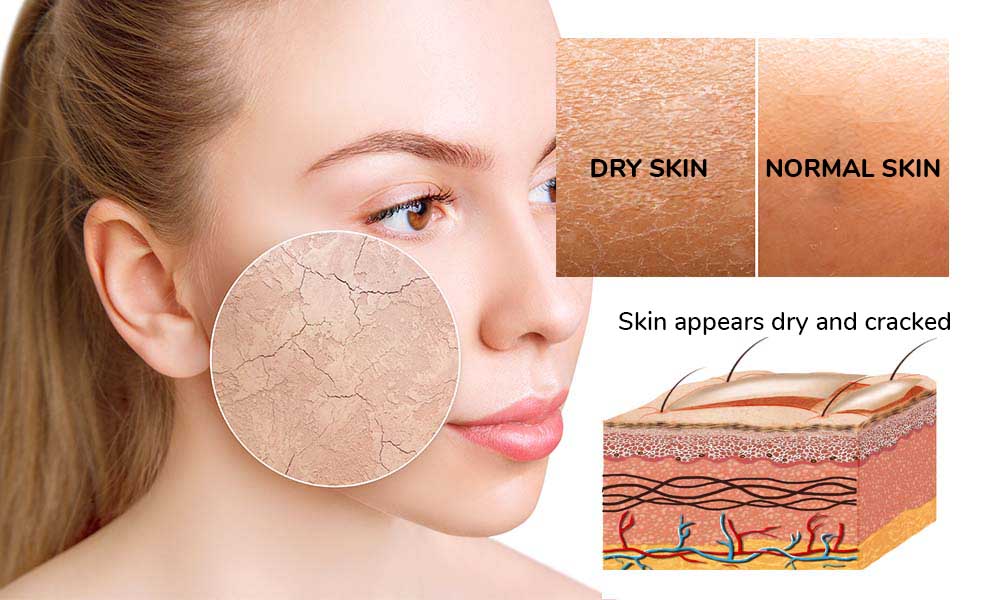Dry, Dehydrated Skin
Restore Moisture, Repair the Skin Barrier, and Soothe Discomfort
Before & After: Hydration and Repair for Dry Skin

Our Approach to Hydrating and Repairing Dry Skin
1
Advanced analysis to assess dryness, barrier damage, and hydration needs
2
A targeted protocol designed to replenish moisture and restore skin health
3
Begin treatments with regular follow-ups to monitor hydration and long-term comfort
Understanding Dry Skin: Causes, Symptoms & Solutions
Dry skin occurs when the skin lacks oil due to insufficient sebum production. Sebum is a natural oily substance produced by the sebaceous glands that forms a protective film on the surface of the skin. This film helps shield the skin from external aggressions and prevents water loss from the epidermis.
When the upper layer of the skin is deficient in both lipids and moisture, its protective barrier becomes compromised. As a result, the skin is less able to defend itself against irritants and environmental stressors, which leads to varying degrees of discomfort. With age, sebaceous gland activity decreases, making skin naturally drier over time.
It’s important to distinguish between dry skin (a lack of oil) and dehydrated skin (a lack of water). The two can feel similar but require different care approaches. In fact, dry skin can very easily be mistaken for dehydration.
In addition to natural aging, dry skin may also be worsened by factors such as cold weather, hot showers, air conditioning, harsh skincare products, or over-exfoliation — all of which can damage the skin’s lipid barrier.
Common signs and symptoms of dry skin include:
- Tightness or tugging sensation
- Lack of flexibility and softness
- Tingling or discomfort
- Taut, rough, or flaky texture
- Occasional itching or burning sensation
Dry skin can also make fine lines and wrinkles more visible, as the surface becomes less plump and elastic. Maintaining healthy, supple, and soft skin requires appropriate care to rebuild and protect the skin barrier over time.
Some Causes of Dry Skin
- Genetics
- Slowly active sebaceous glands
- Thin skin
- Excessive exposure to cold and sun
- Taking certain medications
- Alcohol and smoking
- Excessive cleaning
- Unsuitable cosmetic products
Example of Dry Skin

Our Approach to Treating and Restoring Dry Skin
Thanks to high-resolution 3D photos of your face, we are able to analyze the different layers of your skin in depth. This advanced imaging allows us to identify the true origin of the dryness — whether it stems from a weakened skin barrier, lack of sebum production, environmental factors, or other underlying imbalances.
Following this personalized assessment, we design a targeted and effective treatment plan tailored to your skin’s needs, severity of dryness, and overall goals. Our approach aims to restore hydration, comfort, and barrier function while improving the skin’s texture and resilience.
Several therapeutic options may be considered. These can be used individually or, for optimal results, in combination. In many cases, we recommend pairing medical-grade skincare for home use with professional in-clinic treatments. This dual strategy allows us to treat both the symptoms and the root cause of dryness, and ensures long-lasting improvement.
Whether your dryness is occasional or chronic, our goal is to help your skin regain softness, suppleness, and balance through a safe, personalized, and results-driven approach.



